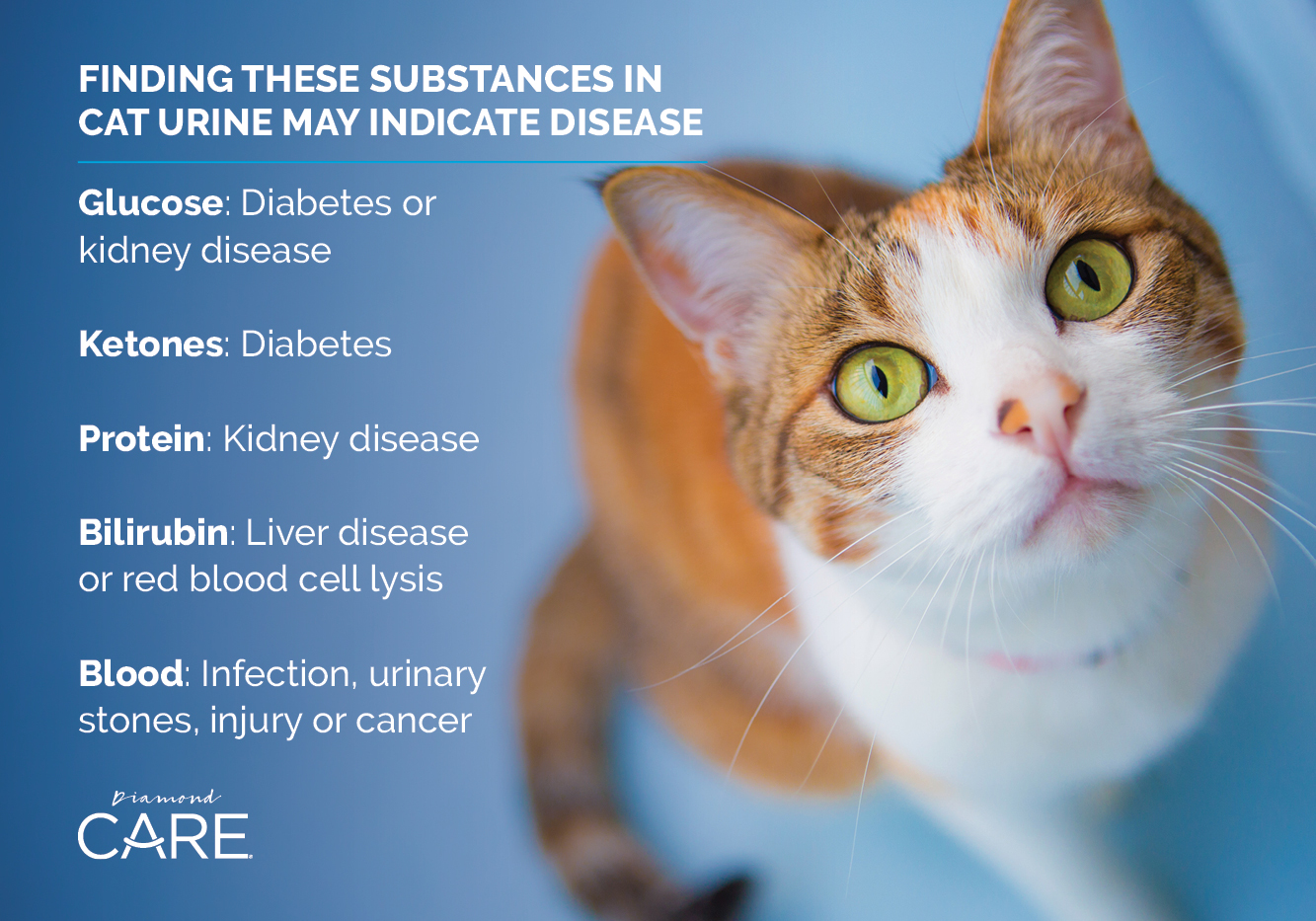Urine Can Tell You a Lot About Your Cat’s Health
If your cat is healthy, you probably haven’t thought much about their urine, except maybe when the litter box needs changing. But urine isn’t just a way of transporting waste out of your cat’s body. It can also provide insight into your cat’s health, including signs of infection or having a medical condition like urinary stones or cancer.
But to really hear what your cat’s urine is saying, you need someone to collect a sample.
Collecting a “Clean” Urine Sample
The method used for collecting a urine sample from your cat will depend on the type of tests your veterinarian has ordered. For some analyses, collecting urine using the “free catch” method (collecting urine as it leaves the body) or collecting it from a tabletop or litter box filled with plastic beads may be fine. But these collection methods will result in a “dirty” sample that likely includes bacteria, cells and other contaminants from the urethra, genital area or table/litter box surface. If the purpose of the urine sample is to confirm an infection like a urinary tract infection (UTI), the contaminated sample can’t be used.
The gold standard for collecting urine samples, and the method that will provide a sterile, uncontaminated sample, is cystocentesis. For this procedure, a needle is inserted through the abdomen wall directly into the urinary bladder, possibly by using an ultrasound for guidance. Cystocentesis is a simple procedure and not as painful as it sounds.
The Two Cs of Urine: Color and Clarity
It’s not as pretty to look at as diamonds, but the color and clarity of urine can provide a lot of useful information. Normal cat urine is a yellow to amber color. A red color may indicate blood in the urine, and orange urine may be caused by bilirubin (a possible sign of liver disease). The clarity of the urine should be clear to slightly cloudy. Urine can appear cloudy or turbid if it contains cells, crystals or bacteria.
The Gravity of the Situation
Urine specific gravity (USG) measures the kidney’s ability to concentrate urine and is assessed using a refractometer. If USG is low, the kidneys may not be functioning correctly. A low USG can also indicate that your cat has increased water consumption. This may be due to a medical condition (e.g., diabetes or hyperthyroidism) or a non-medical reason (e.g., it was a really hot day worthy of lots of trips to the water station). An elevated USG is usually due to dehydration.
Dipsticks Aren’t Just for Oil
A dipstick test, which is a plastic strip lined with multiple pads, is typically used to measure the chemical properties of urine, including pH, glucose, ketones, protein, bilirubin and blood. The individual dipstick pads change color when dipped into the urine, and the colors are then compared to the provided chart to assess the results. The presence of a particular substance, or results that are outside the normal range, can be indicators of disease.

What the Eye Can’t See, the Microscope Can
After examining the physical and chemical properties of urine, further information can be gained by examining the urine under a microscope. To do this, the urine is centrifuged (spun at very high speed) and the sediment at the bottom of the tube is collected. The sediment is examined under a microscope to look for bacteria, red or white blood cells, crystals, and in some cases, cancerous cells.
Normal urine does not contain bacteria. If bacteria are detected, a urine culture and sensitivity test may be recommended to help identify the bacteria involved and determine the most effective antibiotic to treat the infection. Crystals in the urine represent a risk factor of urinary stone formation (kidney stones or bladder stones) and an abdominal X-ray may be recommended to check for urinary tract stones. An abdominal X-ray or ultrasound may also be recommended if cancerous cells are detected. This will allow examination of the entire urinary tract for evidence of a tumor or other problem.
With relatively straightforward collection and analysis methods, a urine sample can provide your veterinarian with a lot of information about your cat’s health, and it can help determine the next steps for your cat’s care.
RELATED POST: What You Should Know About Feline Lower Urinary Tract Disease
